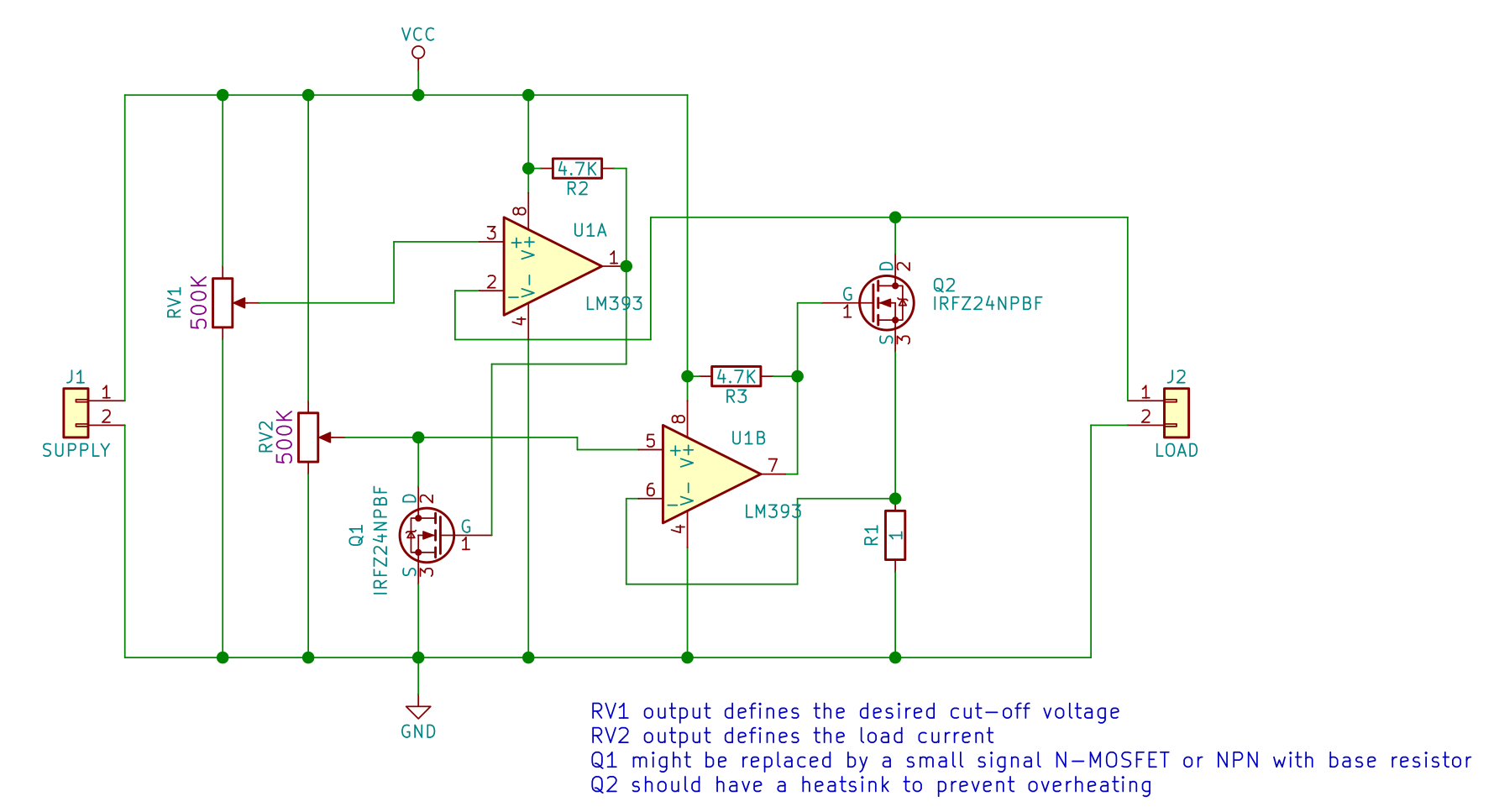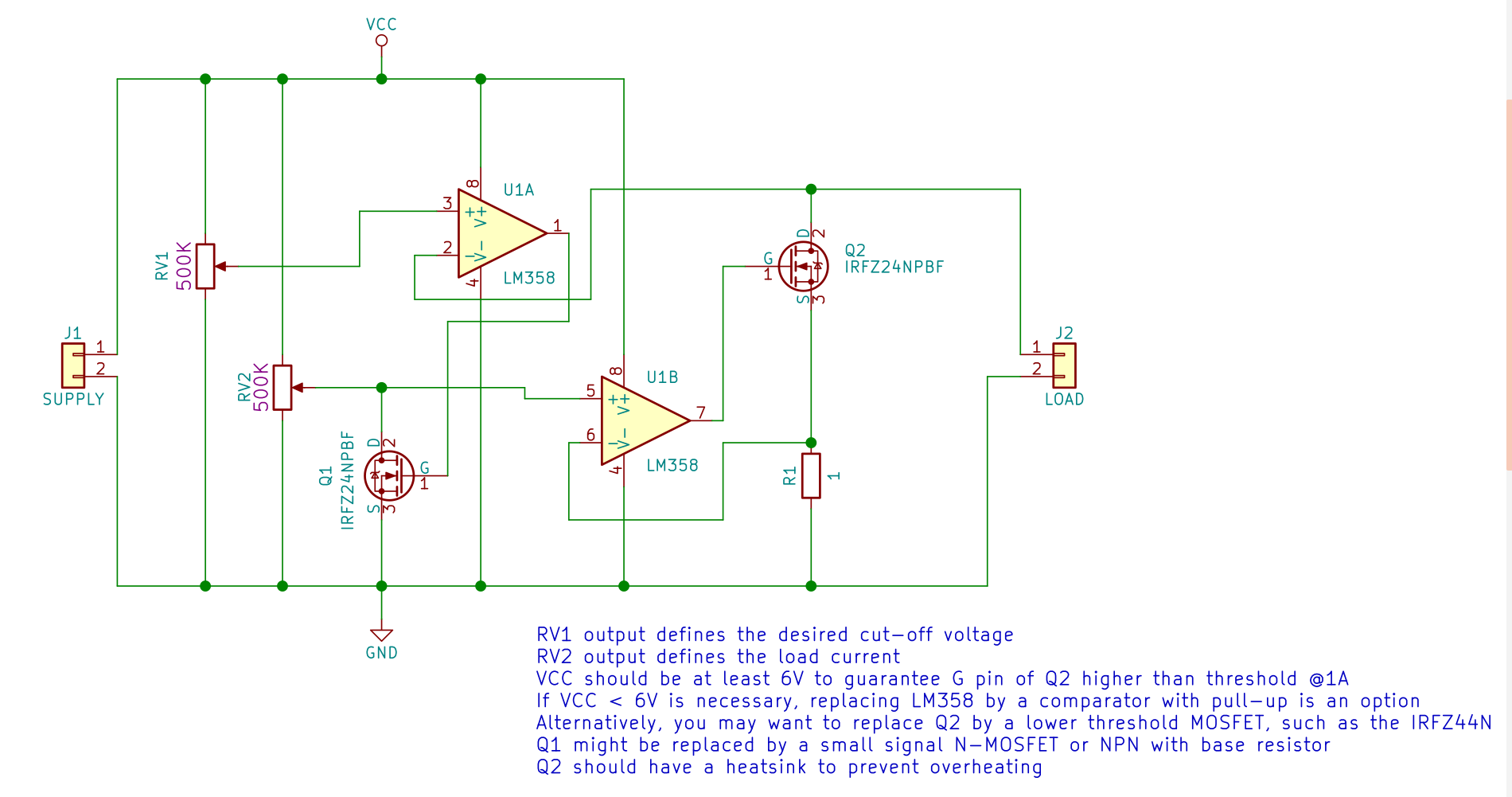Objective
Read moreCreate a constant current load with a cut-off voltage feature. Its main purpose is to obtain discharge curves from lithium batteries preventing over-discharge.
How-toThe first step is to assemble the circuit shown on the schematics section. Pay close look to the circuit remarks:
- RV1 output defines the desired cut-off voltage
- RV2 output defines the load current
- VCC should be at least 6V to guarantee G pin of Q2 higher than threshold @1A
- If VCC < 6V is necessary, check schematic with LM393 instead of LM358
- Alternatively, you may want to replace Q2 by a lower threshold MOSFET, such as the IRFZ44N
- Q1 might be replaced by a small signal N-MOSFET or NPN with base resistor
- Q2 should have a heatsink to prevent overheating
Once the circuit is assembled, follow the steps:
- Connect your power supply or battery (not the one to be discharged) to the SUPPLY pins (J1).
- Adjust the RV1 output to the desired cut-off voltage: 2.8 to 3V for lithium batteries.
- Connect a power supply set to a voltage higher than cut-off to LOAD pins (J2). Power supply current should be limited. It is not wise to already use the battery, since discharge current is not yet adjusted.
- Adjust RV2 output to the desired discharge current
- Lower the power supply voltage to test the cut-off feature
- Unhook the power supply and connect your battery. It will be discharged with the previous set current.
Thanks to GreatScottLab.













Comments
Please log in or sign up to comment.